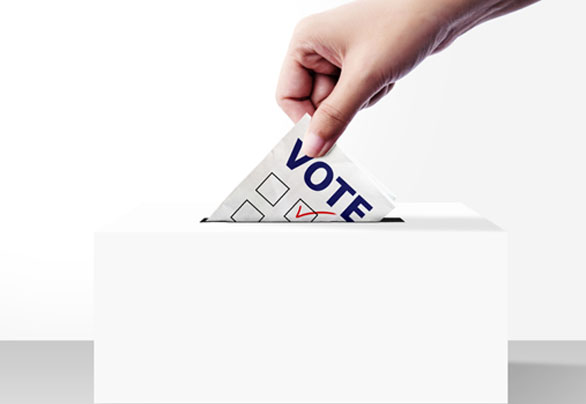
Which candidate will win the election? How many citizens agree with the city’s new policy? Are consumers satisfied with the company’s response to the crisis? All of these questions can be answered using public opinion polling. This research method helps gauge attitudes on a myriad of topics from political candidates, social issues, laws, and much more. Researchers commonly administer polls through telephone, online, mail, or in-person methods. Using closed and open-ended questions, pollsters aim to uncover the general consensus amongst a specific population. In this article, Eyes4Research provides you with 4 public opinion polling best practices to help you get the most from your polling data.
When conducting a public opinion poll, the wording is everything. When asking open and close-ended questions, researchers should always use neutral question wording to avoid coercing participants into giving a specific answer. Asking leading questions when conducting an opinion poll introduces bias. This results in substandard data quality as opinions are not accurately represented. To identify and avoid asking poorly framed questions, researchers should ask themselves the following questions:
Pre-testing remains an important, proactive measure to ensure polls are ready for deployment. Running polls through a series of tests saves researchers time and money, identifying problems before data quality becomes compromised. Respondent debriefing is a popular pre-testing method that tests surveys amongst a small group of respondents before initial deployment. This method collects participant feedback on comprehension, interpretation, and overall survey content, helping researchers adjust polls to ensure high-quality data collection. The expert evaluation also improves polling performance, allowing researchers to receive feedback from topic experts and survey methodologists for more valuable insights.
2. Use Multiple Platforms
With the emergence of the internet and smartphones, pollsters are no longer limited to telephone surveying. Traditional polling methods consist of establishing a model of specific voter characteristics and putting together a sample of a few thousand individuals who fit the model. Though this method targets very specific audiences, smaller sample sizes leave room for assumptions hurting overall poll accuracy. In addition, keeping error rates below 3% may cost researchers a great deal of time and money.
To increase response rates, researchers should utilize the internet, text, and email to broaden their reach. Online panels, such as the ones provided by Eyes4Research, are an excellent way to gauge voter opinion. With millions of respondents available through the web, these methods often result in a higher response rate, improving overall poll accuracy. With access to more electorates, researchers can drastically increase sample sizes, predicting outcomes from a larger pool of data.3.
3. Clearly Report Data
Transparency remains one of the most essential parts of conducting a poll. Presenting information in an organized, detailed manner helps others assess polling quality and efficiently draw conclusions from the data collected. Researchers should provide information on sampling methods, the margin of error, potential biases, and organizations involved in poll execution. The AAPOR Code of Professional Ethics and Practice provides guidelines for what information is required for sufficient transparency.
In addition to these details, the visual representation of data also affects the interpretation of results. With this, researchers must determine the most appropriate way to convey key data points through bar graphs, pie charts, maps, and line graphs. Utilizing text and graphics to convey data points helps audiences more easily identify and understand results, turning complex polling data into easily digestible information.
Looking to conduct your own public opinion poll? Eyes4Research has everything you need to collect high-quality insights. Check out our 10+ panels made up of B2B, B2C, and specialty audiences ready to participate in your next research project. Visit www.eyes4research to learn more about our capabilities and request a bid!
We have used eyes4research for a number of internal product and marketing projects. We have found their services to be professional, accommodating and responsive. The quality of their audience is top notch and their data is very reliable.
The team at Eyes4Research provided us with quick answers to complicated questions. Their personal support allows us to launch surveys at short notice, while the online dashboard makes it easy to analyze responses and visualize the results.
After working with the team from eyes4research, we decided to move all our survey research to online, and now we are able to conduct research fast, less expensive, and with more accurate samples than ever in our business history.
Eyes4Research provided outstanding support managing a large scale survey we conducted in the United Kingdom. The team works with high professional standards, competency and provided timely delivery throughout the project.
The team at Eyes4Research worked with me not only for getting consensus on the presentation, but also accommodated my inclusion criteria without hesitation. Additionally, I loved the dashboard and the features available for reporting.